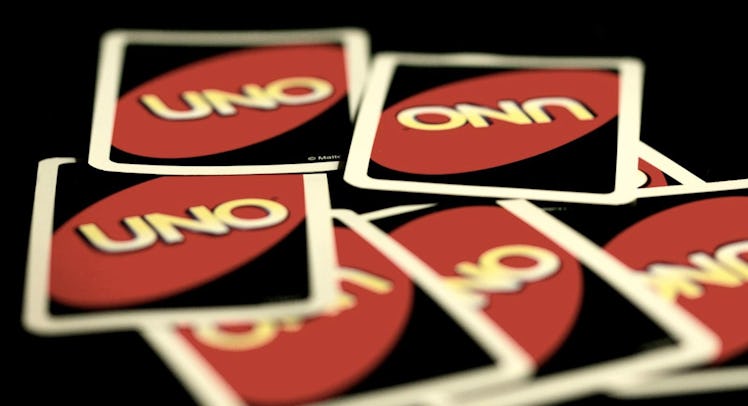Turns Out You’ve Been Playing Uno Wrong This Whole Time
Mattel clarified that a common tactic is illegal, but the Internet was not having it.

The latest internet-fueled controversy isn’t about the color of a dress or debunked hoax. It’s about something more important, more sacred: the correct way to play Uno. A tweet from the official account of the Mattel-owned card game sent on Saturday clarified that the Draw 6 rule is null and void. That is, if the player before you plays a +4 card you cannot play a +2 on top of it to avoid drawing cards and force the next player to draw six cards.
The game is a beloved American classic, created in 1971 by a barber in a Cincinnati suburb. It’s something that people take seriously, and the Draw 6 rule is has been passed down through the generations. So reactions to the news, which seemingly came out of nowhere, were swift and aggressive.
And if you thought you might be allowed to play some other combination of draw cards, we have some more bad news for you.
The official instructions for the Wild Draw Four Card include this sentence: “When you play this card, you get to choose the color that continues play PLUS the next player must draw 4 cards from the DRAW pile and lose their turn.”
Of course, most people don’t actually learn card games by reading the instructions. They learn them from people who’ve played before, which we can only imagine is how this particular unofficial modification became so ingrained in popular play.
So while the official rules might say one thing, we don’t expect many folks who have grown up playing another way to change because of a tweet
The original tweet has over 51,000 likes and more 2,800 comments. The previous tweet from the account, one that didn’t aim to stir up controversy? Fifty-four likes and four comments.
So if the goal was to get people to change how they play Uno, it doesn’t seem like that’ll happen. If the goal was to stir up some internet traffic around the card game, mission accomplished.
This article was originally published on